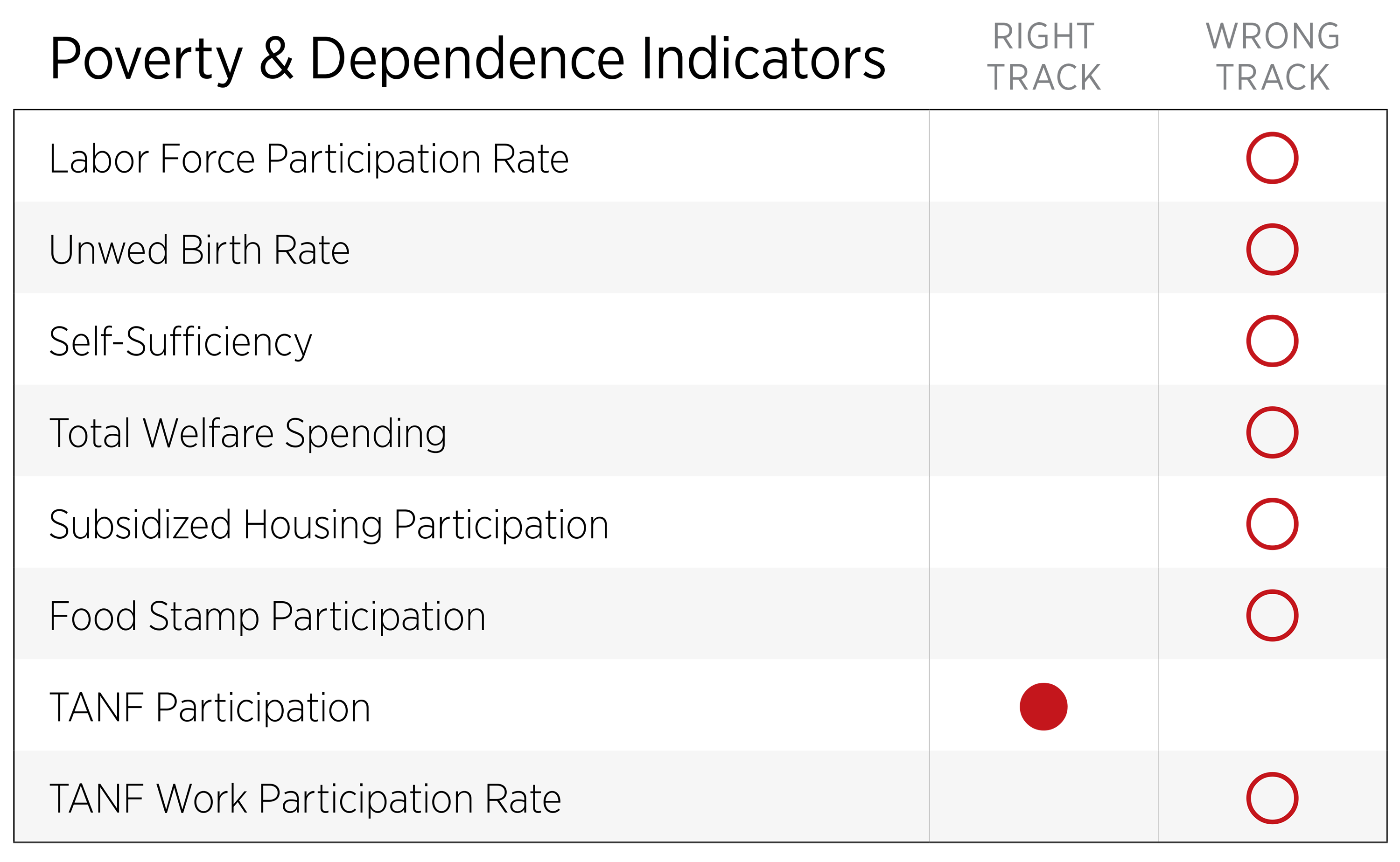- The labor force participation rate (LFPR) for adults ages 25 to 54—those at prime working ages—fell by 1.6 percentage points between 2006 and 2016. “For the better part of the past two decades, America’s LFPR has been heading mainly in the wrong direction. Worrisome in and of itself, the decline in LFPRs also reflects and further exacerbates a multiplicity of additional social ills,” writes Nick Eberstadt.
- The percentage of individuals who live in poverty (excluding welfare benefits) increased just under 1 percentage point (0.9) between 2005 and 2015. “Our current welfare system is structured to disincentivize self-improvement and the reaching of full potentials,” observes Representative Jim Jordan. “This encourages idleness—the exact opposite of what our welfare system should do. To improve the well-being of the poor, the welfare system should promote rather than penalize marriage and encourage work rather than idleness.”
- The number of individuals receiving food stamps increased by about 17.7 million between 2006 and 2016. “[T]he success of SNAP should be measured not only by how much it reduces hunger and improves nutrition, but also by how well it supports and encourages work,” says Angela Rachidi. “Employment among those who can work is the best path toward opportunity and a more prosperous society. All government safety-net programs, including the Supplemental Nutrition Assistance Program, should focus on this broader goal.”
Poverty & Dependence
Poverty & Dependence Summary
Jul 20, 2017 1 min read

